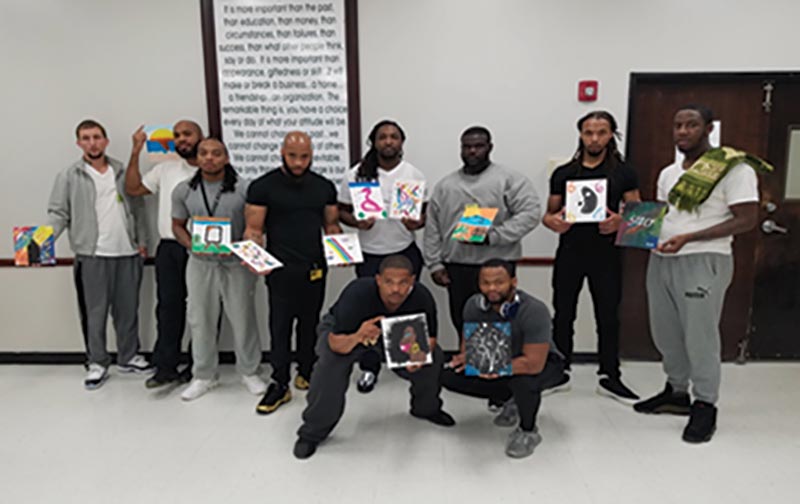
For many decades, many correctional officials have sought to include art – music, dance, writing, painting, even photography – into pro-social programming for incarcerated and formerly incarcerated individuals as a way to encourage self-reflection, boost creativity and support the creation of something positive. In July, GEO Reentry’s Tully House Residential Reentry Center tapped into this strategy to host a “Paint Social” for the facility’s residents, and the result was positive for staff and program residents.
Fifteen participants signed up and painted a variety of subjects, including colorful flamingoes, landscapes, portraits and more. While painting, the participants discussed their paintings with each other while enjoying coffee and cake. Participants also expressed the thought behind their work as they were painting, and many generated a number of titles for their paintings, including “The Thang,” “The House,” “Life, Proud, The Look,” and “The Runaway Cell Phone.”
The Paint Social was coordinated by Samantha Brooks, the center’s education manager. Ms. Brooks, who is always seeking new ways to engage Tully House residents in learning as a path to creating better lives, was supported by Ms. Lord, office administrator, and other center staff.
“We welcome teaching aids that provide residents with tools that will improve thinking processes,” said Richard McCourt, GEO Reentry senior area manager. “Within the painting exercise is the lesson of decision-making, problem-solving, and socialization, all of which supports the other reentry programming we deliver.”
Tully House is a residential reentry center that provides more than 300 participants with intensive supervision and treatment services, coupled with work release and vocational, educational, and college education referral services. Participants are referred to Tully House with a goal of reuniting residents with their families, reestablishing healthy family relationships, and reintegrating individuals successfully back to community life.
“I enjoyed the event and I hope we could have more events like this,” said one resident who appreciated the opportunity to paint as a means of expression. Residents suggested similar sentiments, remarking that they enjoyed the opportunity for creative expression while sharing ideas and choices made through painting.
